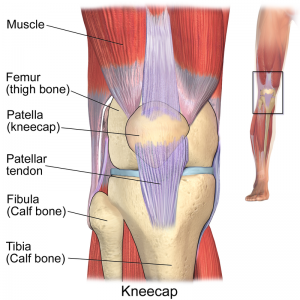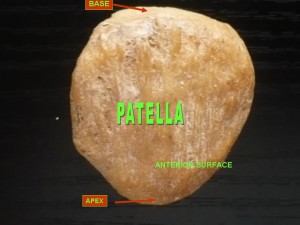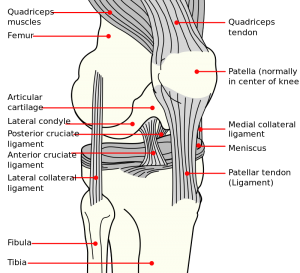The patella bone, commonly called the kneecap, is not meant to be a weight-bearing bone, so I usually tell my students that they can put a blanket under their knees for poses where the knees are on the ground.
Some choose not to, and I can relate as I used to have a similar mindset.
But these days a blanket can always be found under my knees.
The kneecap covers and protects the knee joint and is the largest sesamoid bone in the body.
A sesamoid is a bone is a bone embedded within a tendon, usually across a joint, and acts to increase the mechanical effectiveness of a muscle.
The kneecap is embedded in the quadriceps muscle. The quadriceps muscle group comprises four muscles that meet to form a common tendon that houses the kneecap and attaches to the tibia, the larger of the two shin bones.
The quadriceps muscle is an extensor of the knee, an action accomplished with the help of the patella.
The rectus femoris, the lone quadriceps muscle attaching to the pelvis, is also a hip flexor.
If you are standing and you lift the knee up towards your chest that is the work of the rectus femoris (and the iliopsoas).
If you extend the knee to straighten the leg, that is the work of the rest of the quadriceps as well.
On a gruesomely related note—to reinforce that the kneecap is not a weight-bearing bone— I am currently on the final installment of the Child 44 trilogy by Tom Rob Smith.
Following the harrowing adventures of Leo Demidov we learn a catalogue of torture techniques, several which our hero must endure.
The one I am mentioning now (spoiler alert) is when he is tied up (basically in bow pose) and hung from the ceiling by his armpits with the full weight of his body resting on his kneecaps—for twelve hours. The results are not pretty.
I love reading things that apply to what I teach, even in such a context.
***



